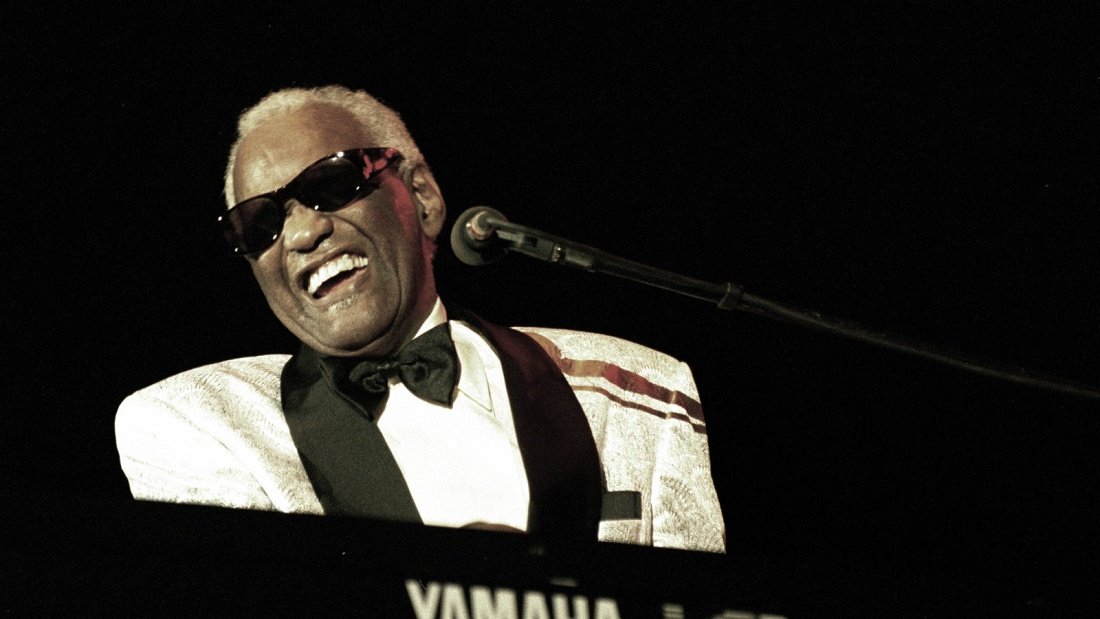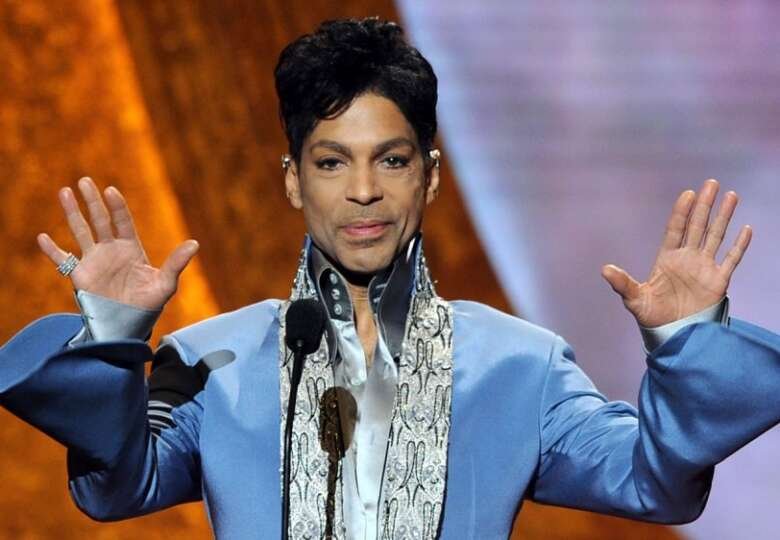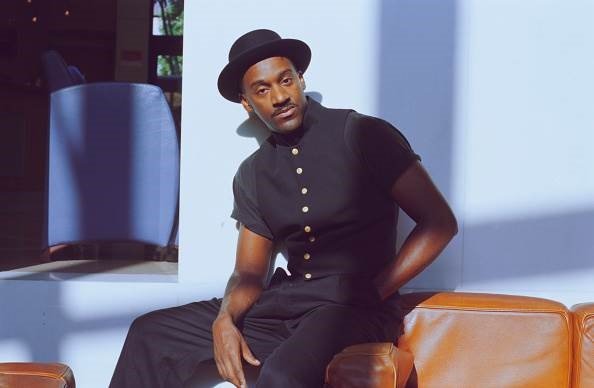
Ray Charles: Part 1.
Ray Charles Robinson Sr. September 23, 1930 June 10, 2004. Was an American singer, songwriter & pianist. He is regarded as one of the most iconic & influential musicians in history, & was often referred to by contemporaries as, The Genius. Among friends & fellow musicians he preferred being called, Brother Ray. Charles was blinded during childhood, possibly due to glaucoma.Charles pioneered the soul music genre during the 1950s by combining blues, jazz, rhythm & blues, & gospel styles into the music he recorded for Atlantic Records. He contributed to the integration of country music, rhythm & blues,
& pop music during the 1960s with his crossover success on ABC Records, notably with his two Modern Sounds albums. While he was with ABC, Charles became one of the first black musicians to be granted artistic control by a mainstream record company. Ray Charles’ 1960 hit, Georgia on My Mind, was the first of his three career No. 1 hits on the Billboard Hot 100. His 1962 album Modern Sounds in Country & Western Music became his first album to top the Billboard 200. Charles had multiple singles reach the Top 40 on various Billboard charts: 44 on the US R&B singles chart, 11 on the Hot 100 singles chart, two on the Hot Country singles charts.
Charles cited Nat King Cole as a primary influence, but his music was also influenced by Louis Jordan & Charles Brown. He had a lifelong friendship & occasional partnership with Quincy Jones. Frank Sinatra called Ray Charles, The only true genius in show business, Although Charles downplayed this notion. Billy Joel said, This may sound like sacrilege, but I think Ray Charles was more important than Elvis Presley. For his musical contributions, Charles received the Kennedy Center Honors, the National Medal of Arts, & the Polar Music Prize. He was one of the inaugural inductees at the Rock & Roll Hall of Fame in 1986.
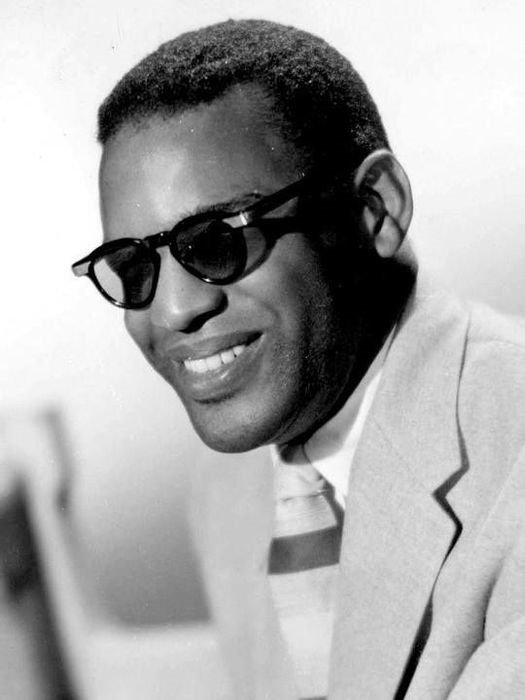
He has won 18 Grammy Awards, Five Posthumously, The Grammy Lifetime Achievement Award in 1987, & 10 of his recordings have been inducted into the Grammy Hall of Fame. Rolling Stone ranked Charles No. 10 on their list of the 100 Greatest Artists of All Time, & No. 2 on their list of the 100 Greatest Singers of All Time. In 2022, he was inducted into the Country Music Hall of Fame, as well as the Black Music & Entertainment Walk of Fame.
Early life & education:
Ray Charles was born on September 23, 1930, in Albany, Georgia. He was the son of Bailey Robinson, a laborer, & Aretha, Or Reatha Robinson née Williams, A laundress, of Greenville, Florida. During Aretha’s childhood, Her mother died. Her father could not keep her. Bailey, A man her father worked with, took her in. The Robinson family Bailey, his wife Mary Jane, & his mother informally adopted her & Aretha took the surname Robinson. A few years later Aretha became pregnant by Bailey. During the ensuing scandal, she left Greenville late in the summer of 1930 to be with family back in Albany. After the birth of the child, Ray Charles, she & the infant Charles returned to Greenville. Aretha & Bailey’s wife, who had lost a son, then shared in Charles’ upbringing. The father abandoned the family, left Greenville, & married another woman elsewhere. By his first birthday, Charles had a brother, George.
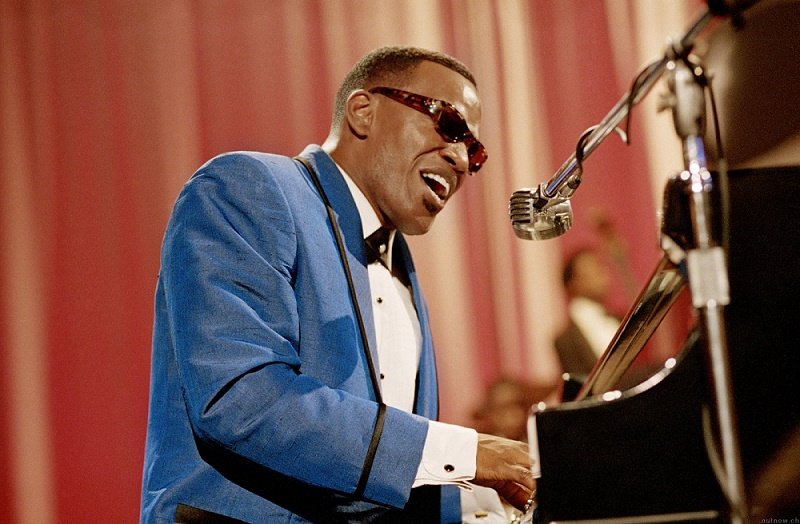
Charles was deeply devoted to his mother & later recalled, despite her poor health & adversity, her perseverance, self sufficiency, & pride as guiding lights in his life. In his early years, Charles showed an interest in mechanical objects & often watched his neighbors working on their cars & farm machinery. His musical curiosity was sparked at Wylie Pitman’s Red Wing Cafe, at the age of three, when Pitman played boogie woogie on an old upright piano; Pitman subsequently taught Charles how to play the piano. Charles & his mother were always welcome at the Red Wing Cafe & even lived there when they were in financial distress. Pitman also cared for Ray’s younger brother George, to take some of the burden off their mother. George accidentally drowned in his mother’s laundry tub when he was four years old. Charles started to lose his sight at the age of four or five, & was blind by the age of seven, It Is likely as a result of glaucoma. Destitute, uneducated, & mourning the loss of her younger son, Aretha Robinson used her connections in the local community to find a school that would accept a blind African American pupil. Despite his initial protest, Charles attended school at the Florida School for the Deaf & the Blind in St. Augustine from 1937 to 1945.
Charles further developed his musical talent at school & was taught to play the classical piano music of Bach, Mozart & Beethoven. His teacher, Mrs. Lawrence, taught him how to use braille music, a difficult process that requires learning the left hand movements by reading braille with the right hand & learning the right hand movements by reading braille with the left hand, then combining the two parts. Charles’ mother died in the spring of 1945, when he was 14. Her death came as a shock to him, He later said the deaths of his brother & mother were, The two great tragedies, of his life. Charles decided not to return to school after the funeral.
His Career. 1945–1952: Florida, Los Angeles, & Seattle, After leaving school, Charles moved to Jacksonville to live with Charles Wayne Powell, who had been friends with his late mother. He played the piano for bands at the Ritz Theatre in LaVilla for over a year, Earning $4 a night, US $46, In 2023 value. He joined Local 632 of the American Federation of Musicians, in the hope that it would help him get work, And was able to use the union hall’s piano to practice, since he did not have one at home, He learned piano licks from copying the other players there. He started to build a reputation as a talented musician in Jacksonville, But the jobs did not come fast enough for him to construct a strong identity, so, at age 16, he moved to Orlando, where he lived in borderline poverty & went without food for days. It was difficult for musicians to find work; since World War II had ended, there were no G.I. Joes, Left to entertain. Charles eventually started to write arrangements for a pop music band, & in the summer of 1947, He unsuccessfully auditioned to play piano for Lucky Millinder & his sixteen piece band. In 1947, Charles moved to Tampa, where he held two jobs, including one as a pianist for Charles Brantley’s Honey Dippers.
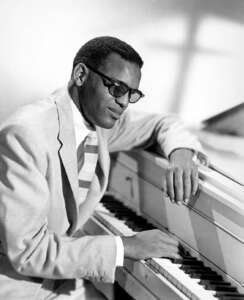
In his early career, Charles modeled himself on Nat King Cole. His first four recordings Wondering & Wondering, Walking & Talking, Why Did You Go? &, I Found My Baby There, Were allegedly done in Tampa, Although some discographies claim he recorded them in Miami in 1951 or else Los Angeles in 1952.
Charles had always played piano for other people, but he was keen to have his own band. He decided to leave Florida for a large city, &, considering Chicago & New York City too big, followed his friend Gossie McKee to Seattle, Washington, in March 1948, knowing that the biggest radio hits came from northern cities. There he met & befriended, under the tutelage of Robert Blackwell, the 15-year-old Quincy Jones. With Charles on piano, McKee on guitar, & Milton Garred on bass, The McSon Trio (named for McKee & Robinson) started playing the 1 to 5 AM. shift at the Rocking Chair. Publicity photos of this trio are some of the earliest known photographs of Charles. In April 1949, He & his band recorded Confession Blues, Which became his first national hit, Soaring to the second spot on the Billboard R&B chart. While still working at the Rocking Chair, Charles also arranged songs for other artists, including Cole Porter’s, Ghost of a Chance, & Dizzy Gillespie’s, Emanon. After the success of his first two singles, Charles moved to Los Angeles in 1950 & spent the next few years touring with the blues musician Lowell Fulson as Fulson’s musical director. In 1950, Charles’ performance in a Miami hotel impressed Henry Stone, who went on to record a Ray Charles Rockin’ record, which did not achieve popularity. During his stay in Miami, Charles was required to stay in the segregated but thriving black community of Overtown. Stone later helped Jerry Wexler find Charles in St. Petersburg. After signing with Swing Time Records, Charles recorded two more R&B hits under the name Ray Charles. Baby, Let Me Hold Your Hand, 1951, Which reached No. 5, & Kissa Me Baby, 1952, Which reached No. 8. Swing Time folded the following year, & Ahmet Ertegun signed Charles to Atlantic. In addition to being a musician, Charles was also a record producer, producing Guitar Slim’s number 1 hit, The Things That I Used to Do.
1952–1959: Atlantic Records. In June 1952, Atlantic bought Charles’ contract for $2,500 US $28,684 in 2023 dollars, His first recording session for Atlantic, The Midnight Hour / Roll with My Baby, Took place in September 1952, Although his last Swing Time release,

Misery in My Heart / The Snow Is Falling, Would not appear until February 1953. In 1953, Mess Around, became his first small hit for Atlantic, During the next year, he had hits with, It Should’ve Been Me, & Don’t You Know. He also recorded the songs Midnight Hour, & Sinner’s Prayer, Around this time. Late in 1954, Charles recorded, I’ve Got a Woman. The lyrics were written by bandleader Renald Richard. Charles claimed the composition. They later admitted that the song went back to the Southern Tones, It Must Be Jesus, 1954. It became one of his most notable hits, Reaching No. 2 on the R&B chart. I’ve Got a Woman, combined gospel, jazz, & blues elements. In 1955, he had hits with, This Little Girl of Mine, & A Fool for You. In upcoming years, hits included, Drown in My Own Tears & Hallelujah I Love Her So. Charles also recorded jazz, such as The Great Ray Charles (1957). He worked with vibraphonist Milt Jackson, releasing Soul Brothers in 1958 & Soul Meeting in 1961. By 1958, he was not only headlining major black venues such as the Apollo Theater in New York, but also larger venues such as Carnegie Hall & the Newport Jazz Festival, where his first live album was recorded in 1958. He hired a female singing group, the Cookies, & renamed them the Raelettes. In 1958, Charles & the Raelettes performed for the famed Cavalcade of Jazz concert produced by Leon Hefflin Sr. held at the Shrine Auditorium on August 3. The other headliners were Little Willie John, Sam Cooke, Ernie Freeman, & Bo Rhambo. Sammy Davis Jr. was also there to crown the winner of the Miss Cavalcade of Jazz beauty contest. The event featured the top four prominent disc jockeys of Los Angeles.

Charles reached the pinnacle of his success at Atlantic with the release of What’d I Say, Which combined gospel, jazz, blues & Latin music. Charles said he wrote it spontaneously while he was performing in clubs with his band. Despite some radio stations banning the song because of its sexually suggestive lyrics, the song became Charles’ first top ten pop record.
It reached No. 6 on the Billboard Pop chart & No. 1 on the Billboard R&B chart in 1959. Later that year, he released his first country song, A cover of Hank Snow’s, I’m Movin’ On, & recorded three more albums for the label. A jazz record The Genius After Hours, 1961. a blues record, The Genius Sings the Blues, 1961, & a big band record The Genius of Ray Charles, 1959. Which was his first Top 40 album, Peaking at No. 17.
